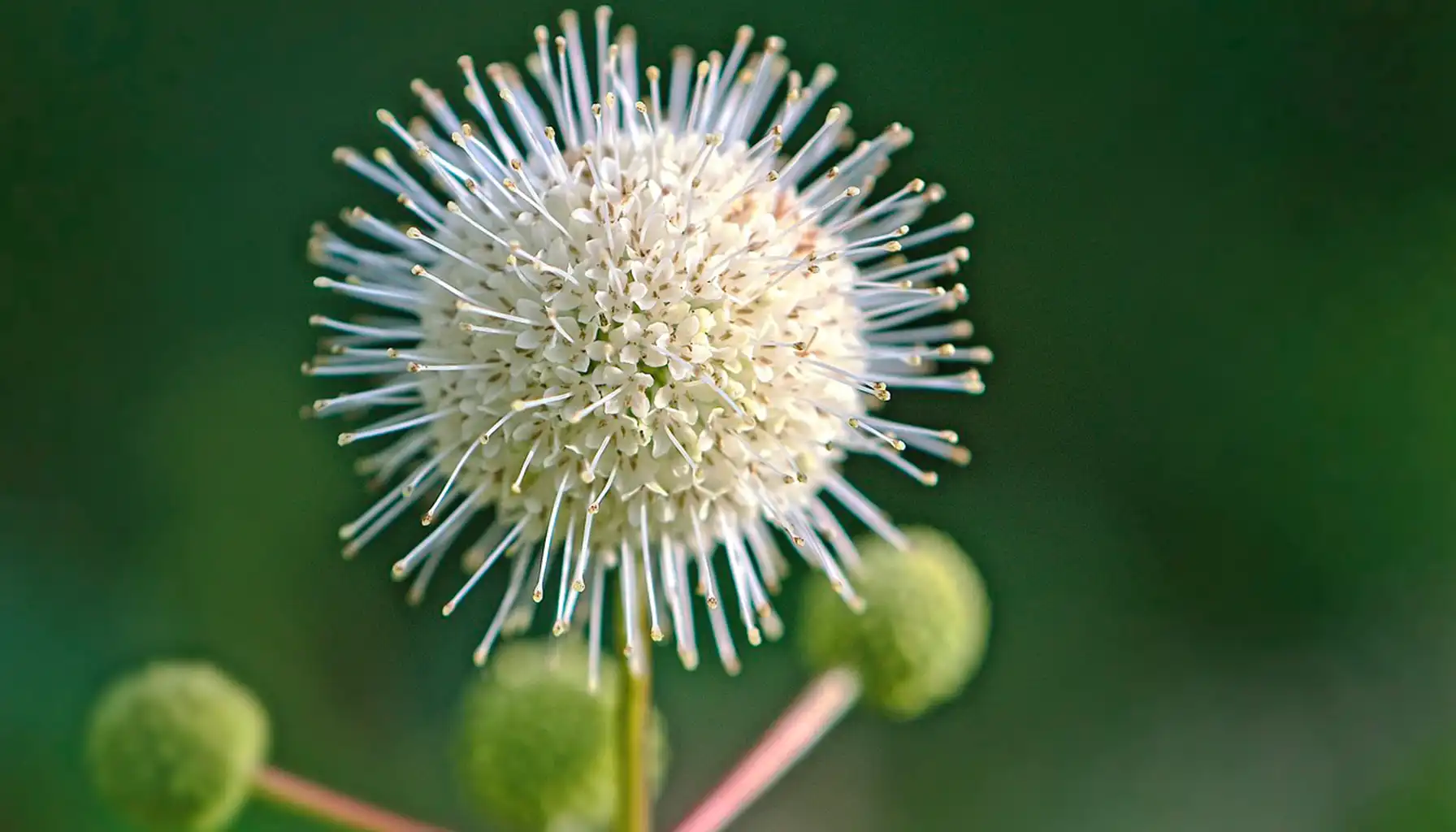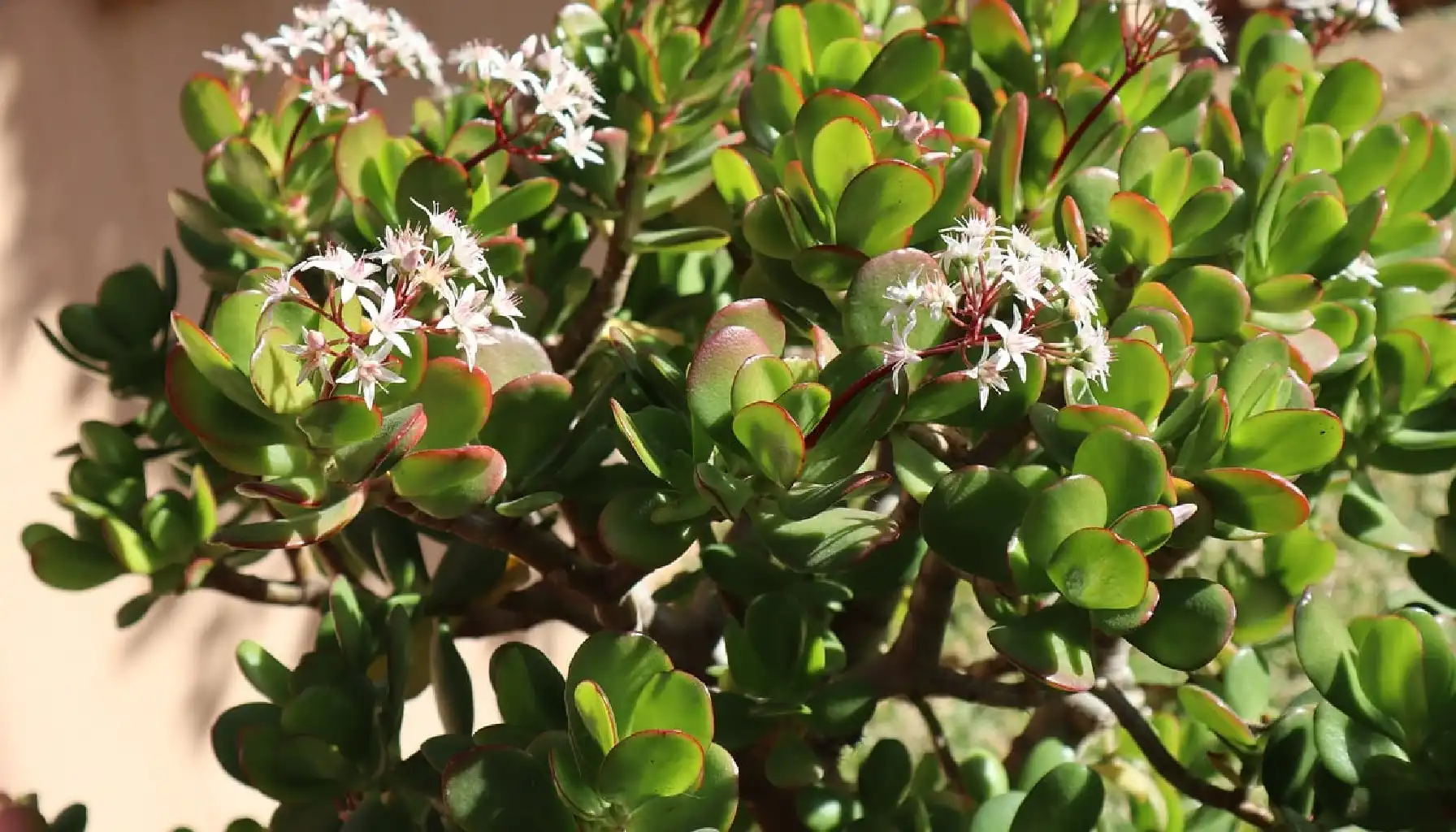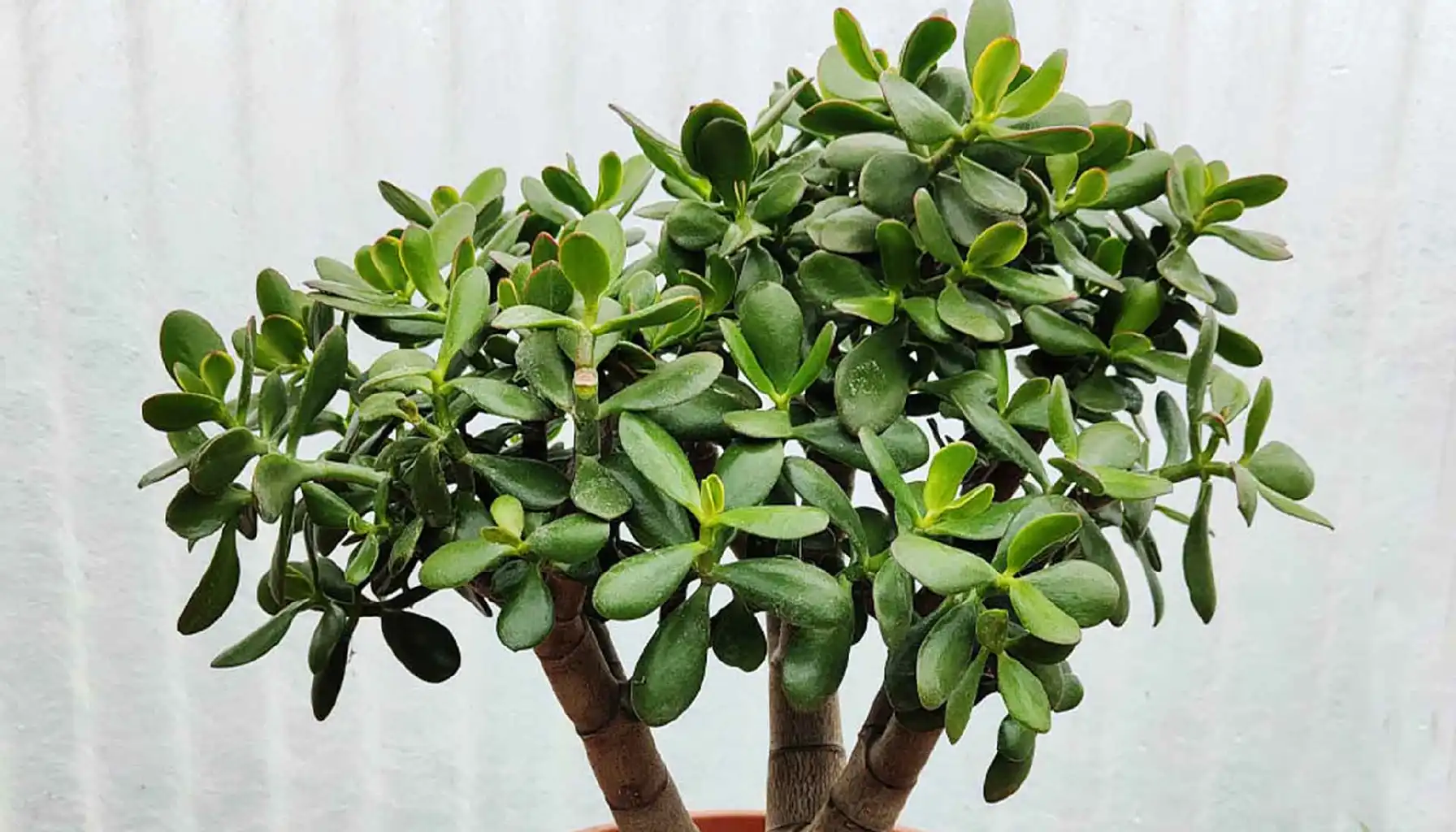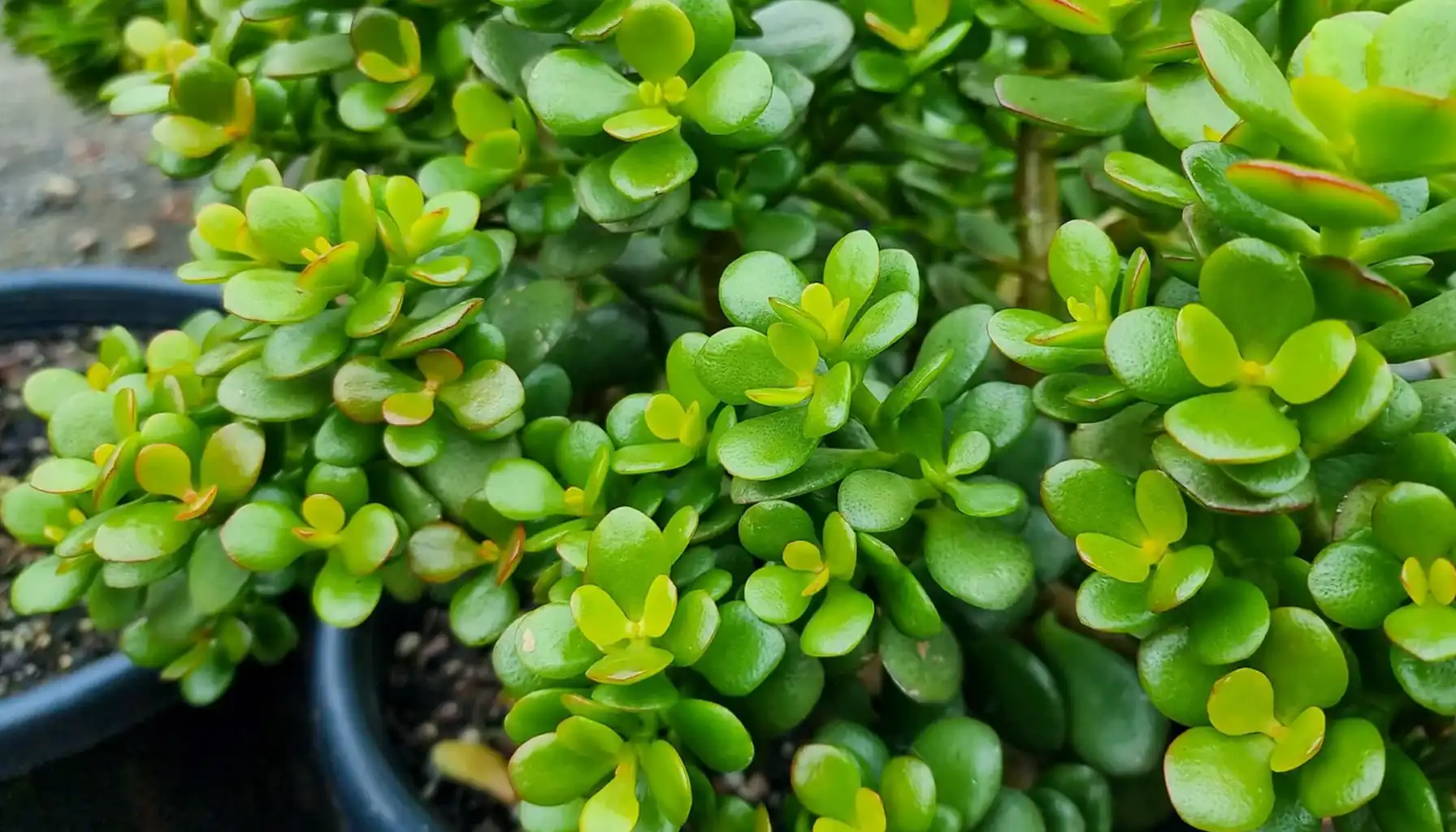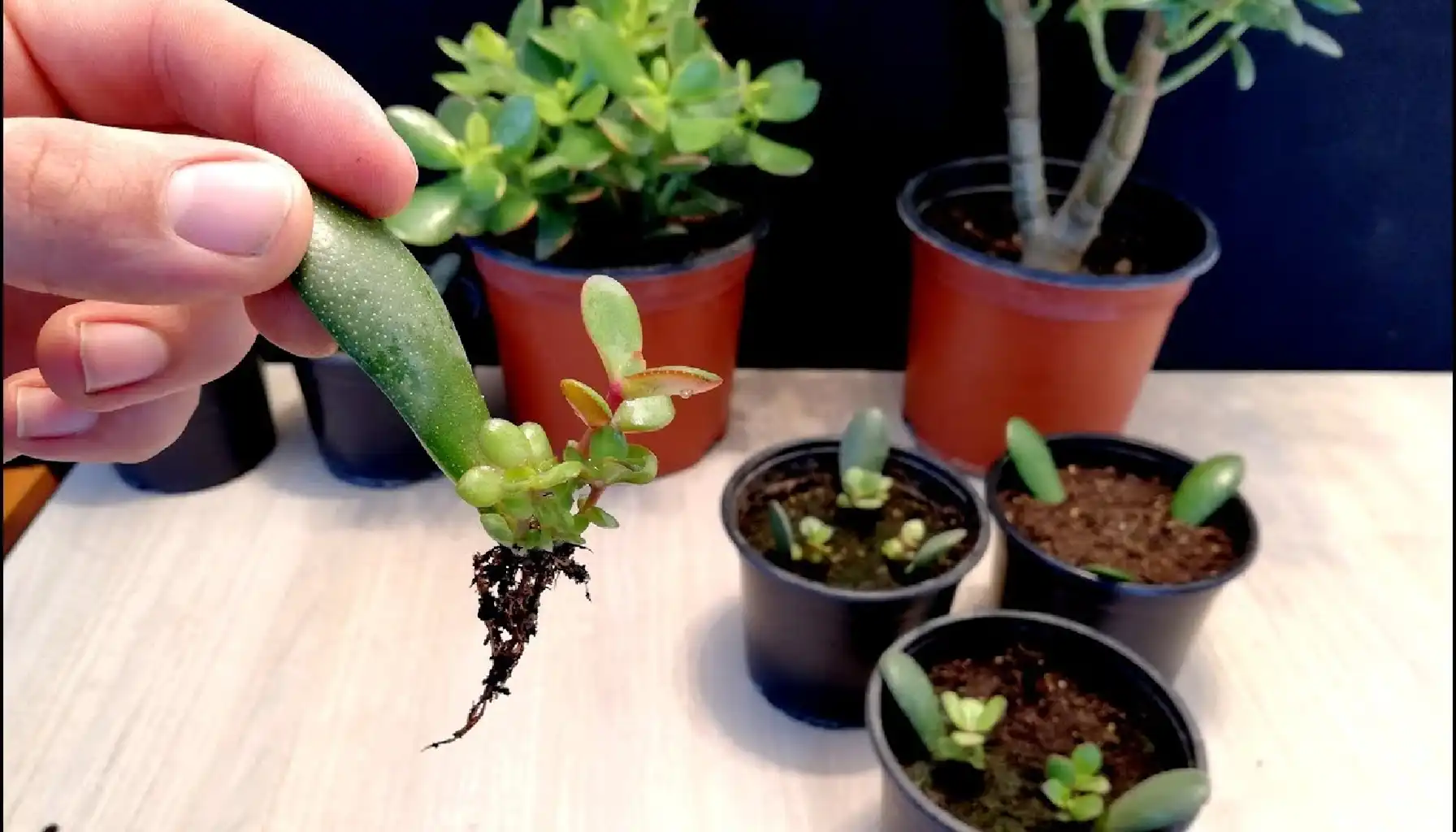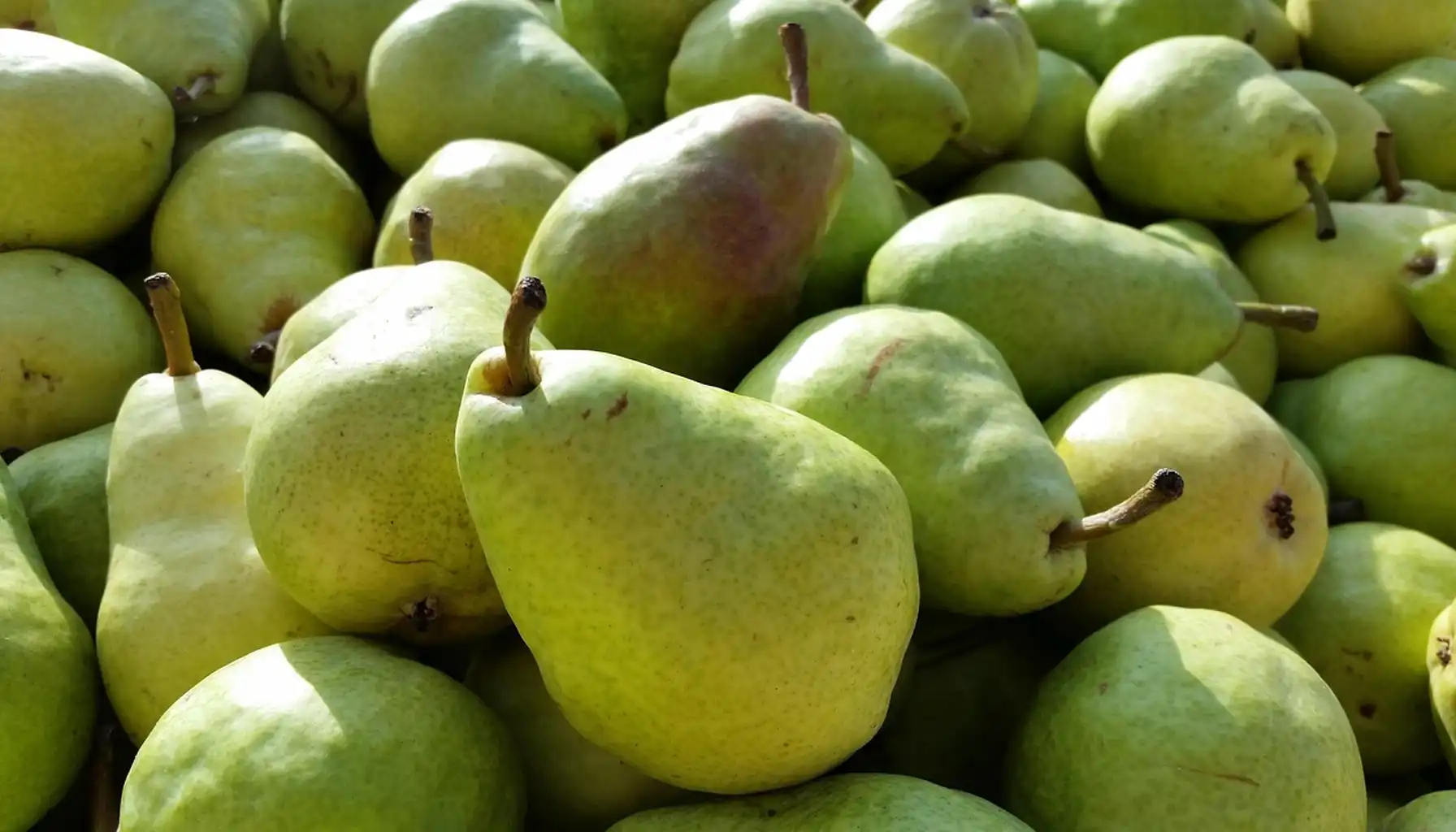While born of nature, it is the human who redefines a given reality, stretching the contours of what is into what could be. Flora is no exception, for people have always strived to expand their agricultural opportunities and migrate with plants they were/are familiar with. Certain species, originally confined to arid landscapes, have been carried across continents for people to enjoy their fruits both in literal and allegorical ways.
Among these is Crassula ovata, the jade plant, i.e., a succulent native to Southern Africa that now lives everywhere – in local parks, in living rooms, offices, and patios – all over the world. Nevertheless, however magical yet easy it may seem, this natural creation requires consistent measures to be taken. So, how to care for a jade plant? How safe is it to keep at home, and which features identify this plant as a decent choice for indoor cultivation?
What Is a Jade Plant?
The jade plant, scientifically known as Crassula ovate, is a popular succulent species of the Crassulaceae family native to the arid regions of South Africa and Mozambique. One of its distinctive features is the foliage, i.e., thick, fleshy leaves and stems that store water. Over time, they grow into more magnificent creations with woody stems that resemble miniature trunks and a branching, tree-like structure.
As per taxonomy, these are evergreen perennials with a tree-like growth habit, and under the right conditions, they can even produce clusters of small, star-shaped flowers in white or pale pink. As a rule, these blooms appear in winter and emit a faintly sweet scent to attract pollinators, e.g., bees, butterflies, and the rest. Indoors, though, such an occasion is rare, yet it can be encouraged by simulating the plant's natural seasonal attributes, i.e., cool nighttime temperatures, reduced watering, etc.
The Main Characteristics |
Botanical Name | Crassula ovata |
Common Names | Jade plant, lucky plant, friendship tree, etc. |
Family | Crassulaceae |
Plant Type | Evergreen succulent; perennial |
Origin | South Africa (Eastern Cape, KwaZulu-Natal), Mozambique |
Growth Habit | Shrubby; tree-like with thick, branching stems |
Size (Mature) | Indoors: 2 to 4 feet Outdoors: up to 6 feet |
Leaves | Fleshy, glossy, obovate (egg-shaped); 1 to 3.5 in long, green with red margins in the sun |
Stems | Succulent when young; woody and brown with age |
Flowers | Small, star-shaped; white to pale pink |
Inflorescence Type | Terminal thyrse with multiple star-shaped flowers |
Fragrance | Mildly sweet |
Bloom Trigger | Short daylight hours, cool temperatures (~55°F/13°C), reduced watering |
Hardiness Zones (USDA) | 10-12 |
Toxicity | Reported: Mildly toxic to pets; possible skin irritation in humans |
Longevity | Can live for decades with proper care |
Related articles: Night-Blooming Flowers for Moonlit Gardens
Jade Plant Types: The Most Popular Cultivars So Far
The classic large jade plant is probably one of the most well-known cultivars, but there are a few more species that are worth paying attention to. These include:
Gollum Jade Plant: Features tubular, finger-like leaves in green with red highlights, with suction cup–like tips.
Hobbit J.P.: Similar to the Gollum variety but with flared, curled leaf tips.
Sunset J.P.: Green leaves with cream to yellow margins, often tinged with pink or red.
Tricolor J.P.: Variegated leaves with green, cream, and pink tones.
Variegated Jade Plant: Creamy-white and green marbled foliage.
Bronze Beauty J.P.: Small, coppery-green leaves that turn bronzed or reddish in strong light. Extremely slow-growing.
California Red Tip J.P.: Green leaves with bold purplish-red edges in full sun.
By the way, dwarf jade plant (Portulacaria afra) is not a true Crassula, but is often confused with it.
Toxicity of the Plant: Is It Safe to Grow?
When ornamental houseplants gain popularity, most enthusiasts overlook their toxicity potential, yet it is the foremost aspect to consider. Is a jade plant toxic to cats and dogs? Well, according to several sources, Crassula ovata may be mildly toxic to pets when ingested, potentially causing symptoms such as vomiting, lethargy, or incoordination. Even humans may be sensitive to the species, yet there should be prolonged contact with the sap.
Despite these concerns, scientific data on toxicity remains limited and somewhat anecdotal. Many households grow them without issue, but it is always better to keep these plants out of reach of pets and small children. Safety comes first either way.
Ideal Growing Conditions
The right environment is all that is needed for a plant to properly develop and turn into a mature, magnificent creation, as nature originally designed it to be. Let us define how to care for a jade plant and what it needs to finally thrive.
Light
In general, these flourish in bright environments and benefit from exposure to direct sunlight. Proper lighting supports healthy growth and enhances leaf color, especially the red-tinted edges in many cultivars.
Requires a minimum of 4 hours of direct sunlight daily
Capable of surviving in bright, indirect light
South- or west-facing windows are generally the most suitable indoor placements
Inadequate lighting may result in etiolation, characterized by elongated, weak stems
Watering
How often to water a jade plant? As a succulent species, baby jade plants, as well as their mature counterparts, thrive in arid environments, for they may boast advanced water-storage mechanisms within their leaves and stems.
Water should be applied only when the potting medium is completely dry
Water deeply but infrequently, only during the active growing season (spring to summer)
In the dormant season (fall and winter), watering frequency should be reduced
Pots should be equipped with drainage holes to prevent water stagnation in the root zone
See also: How Often Should You Water Your Plants? A Seasonal Guide
Temperature
Temperature regulation plays its role in the plant's seasonal behaviors and overall physiology. Briefly speaking, only extreme cold or heat should be avoided.
Ideal daytime temperatures should range from 65°F to 75°F (18°C to 24°C)
Capable of tolerating temperatures as low as 50°F (10°C)
Cannot survive temperature fluctuations
Slightly cooler nighttime temperatures (~55°F/13°C) in autumn may encourage floral development
Humidity
Low-humidity areas are the ones that perfectly mimic the native environment of these types of greenery. Excess moisture may predispose the plant to fungal infections or other physiological disorders.
Thrives when low to moderate relative humidity levels are established
Misting is unnecessary and generally discouraged
Should not be placed in persistently humid environments, such as bathrooms or near humidifiers
Soil
The jade plant soil must provide excellent drainage and replicate the sandy, low-nutrient soils of its natural habitat. This is the main requirement, failing to meet which can be fatal.
A commercial succulent or cactus mix is typically well-suited for cultivation
To be appropriate, the standard potting mix should be amended with coarse sand, perlite, or pumice
Avoid substrates high in peat content or those that retain excess moisture
Soil pH range should be between 6.0 and 6.5, which means it is to be slightly acidic to neutral
For More Information: Soil Control: The Importance of pH Adjustment in Agriculture
Jade Plant Propagation Tips
Making your garden even more vivid often starts with the simple act of growing new plants from the existing ones. Jade plants, on their part, are ideal candidates for propagation at home.
So as to propagate a jade plant, one should be aware of the proper techniques and environmental conditions that support successful rooting. Let us consider the most obvious options for this process below.
Propagation Methods
Stem Cutting
This is the preferred method due to its high success rate and faster results:
Select a healthy, non-flowering stem approximately 3 to 4 inches long
Allow the cutting to dry and form a callous for 2 to 5 days
Insert into well-draining succulent soil, which should be barely moist
Place in bright, indirect light and avoid watering until roots begin to form
Leaf Cutting
A slower but still viable method that requires patience:
Detach a mature, unblemished leaf from the base
Let it callous for 1 to 2 days
Set on top of dry soil
Mist lightly every few days
Roots and plantlets are to develop within several weeks after
Note: Should you require help identifying, diagnosing, or tracking your garden inhabitants, try AI Plant Finder at once! It is a smart assistant that allows one to instantly identify, diagnose, and manage plants. Review care advice, set reminders for watering and pruning, and calculate exactly how much water your green friend needs to thrive. All at once!
Troubleshooting Jade Plant Issues
Even the hardiest plants can encounter problems. Learn what type of issues you may witness and how to cope with them, without harming a plant.
Symptom | Possible Causes | Suggested Solution |
Yellowing leaves | Overwatering, poor drainage, nutrient deficiency | Let the soil dry; improve drainage; repot if necessary |
Wrinkled, shriveled leaves | Underwatering, root damage | Water deeply once the soil is dry; inspect roots for rot or damage |
Mushy, soft leaves | Root rot due to overwatering | Reduce watering; repot in dry, well-drained soil; trim affected roots |
Leaf drop | Sudden environmental change, overwatering, low light | Maintain stable conditions; adjust watering; move to a brighter location |
Leggy, stretched growth | Insufficient light | Relocate to a spot with more direct sunlight; prune back to encourage bushier growth |
Black spots or mold | Fungal infection | Improve ventilation; remove affected areas; consider a fungicidal treatment |
No flowering | Lack of seasonal cues (cool temps, dry period, light cycle) | Reduce watering in fall; provide cool nights and complete darkness at night |
Pale or dull foliage | Lack of sunlight, nutrient deficiency | Move to brighter light; apply balanced fertilizer during the growing season |
Love what you nurture, and the garden will pay you back soon.
AI Plant Finder Related Posts
